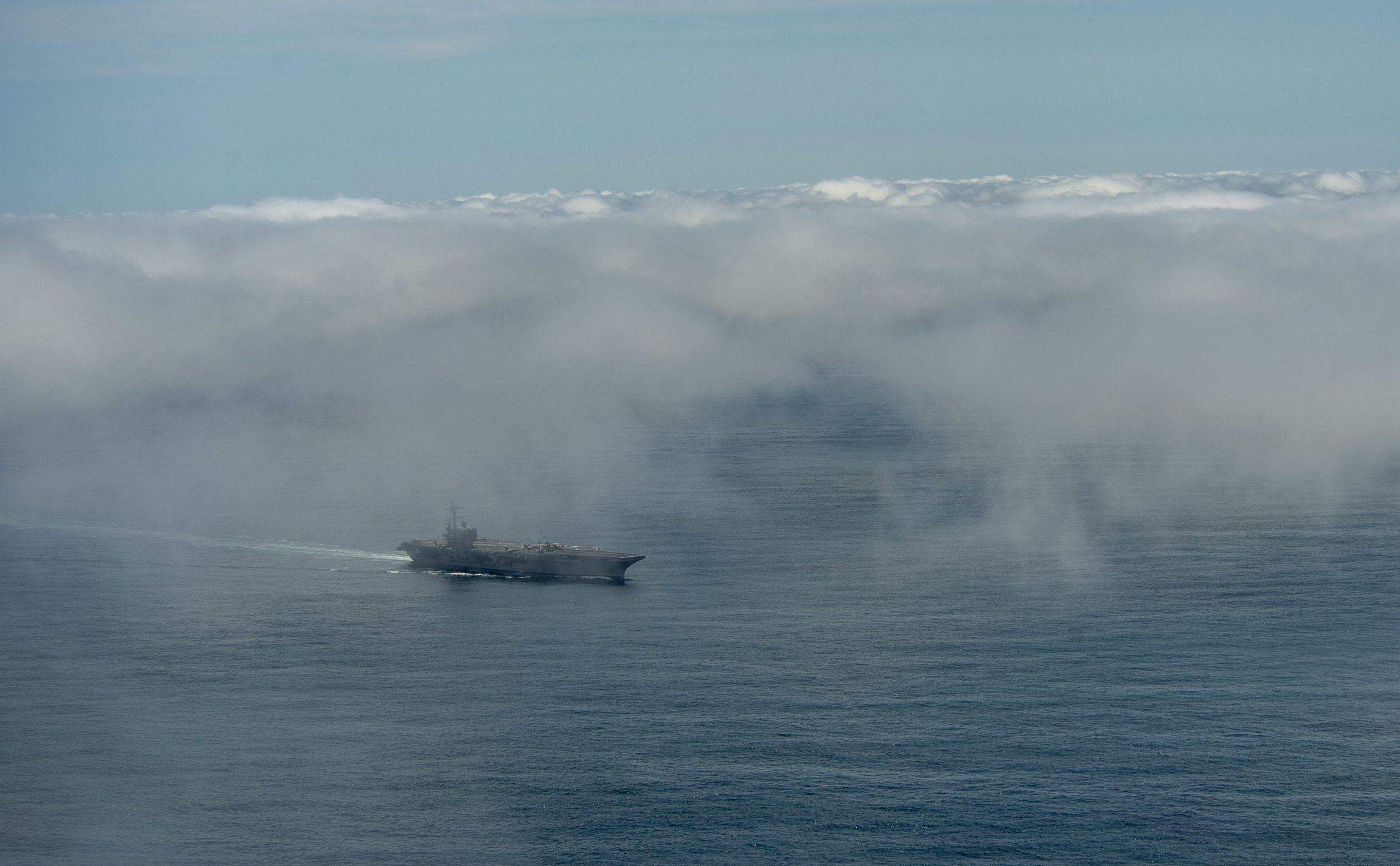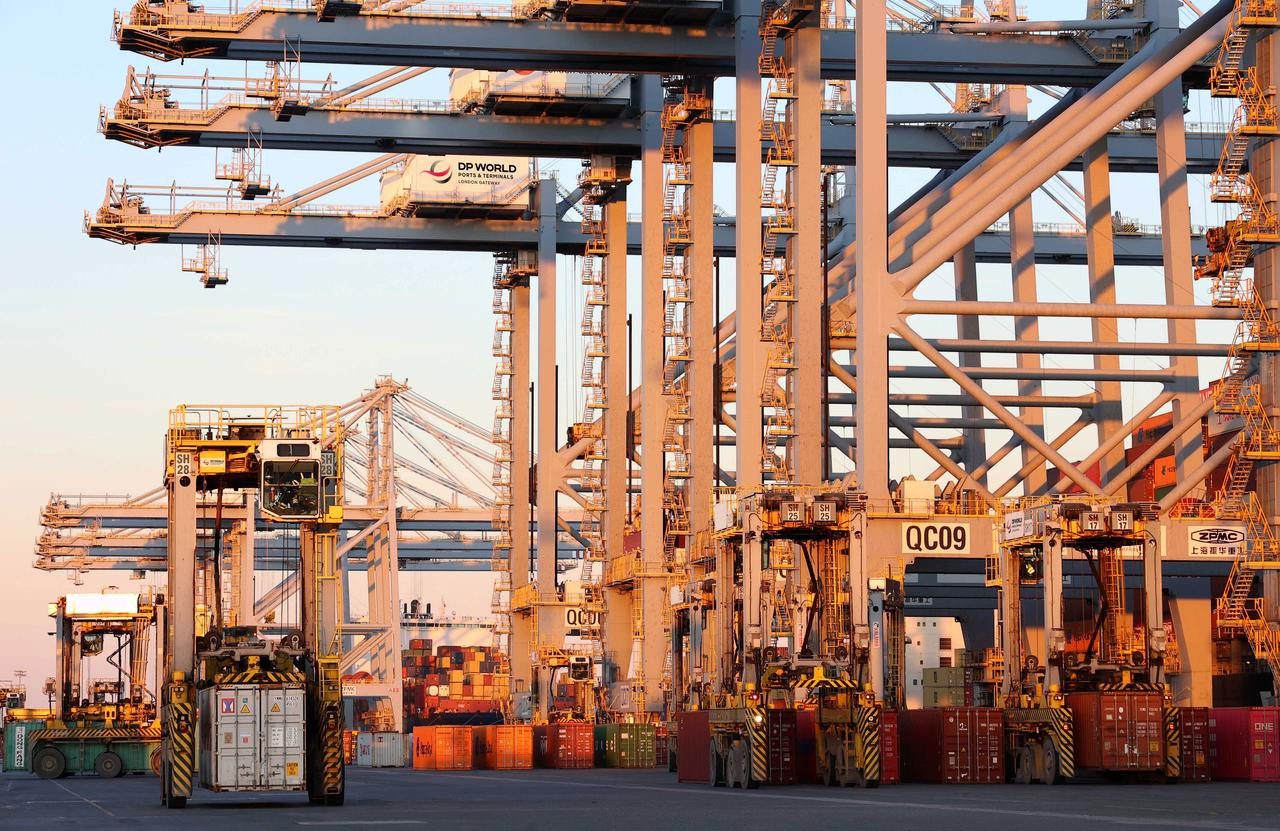The aircraft carrier USS George H.W. Bush (CVN 77) transits the Atlantic Ocean, May 10, 2018. U.S. Navy Photo
By James Stavridis (Bloomberg Opinion) — In yet another indication of the return of great power politics and the cratering U.S.-Russian relationship, the Defense Department announced last week the return of the historic and venerable Second Fleet, which has traditionally guarded the Atlantic approaches to the continental U.S.
The fleet was disestablished in 2011 in an attempt to save money and free up funding for new ship construction. That decision proved shortsighted. The revamped command will have nearly 300 officers and enlisted men and women, and will take on responsibility for training the Atlantic Fleet and, more importantly, conducting real-world operations to track potentially hostile vessels approaching the U.S. coasts.
What does the return of the Second Fleet say about America’s maritime strategy and relations with a resurgent Russia?
First and foremost, it shows a needed response to new to geographic imperatives. For three centuries, the U.S. has enjoyed the benefits of the vast ocean buffer between it and the querulous states of Europe. During World Wars I and II, the U.S. and its allies had to fight hard to gain full “sea control” over the North Atlantic — Germany used undersea warfare very effectively to try and cut off the vital “sea lanes of communication” (i.e. shipping routes) that enabled the free movement of troops and supplies to beleaguered European allies.
During the Cold War, the two vast fleets — U.S. and Soviet — played extended games of cat and mouse. They tested each other, tracking the other side’s submarines and preparing for a full battle of the north Atlantic — which fortunately never materialized.
The most strategic terrain was in the waters around Greenland, Iceland and the western approaches to the U.K.: the so-called GIUK gap.
After the fall of the Berlin Wall, the U.S. drew down the overall size of the Atlantic Fleet, correctly believing that the Russian Federation did not pose the kind of threat represented by the old Soviet Union. Fast forward to rule of Vladimir Putin, who has rebuilt the Russian Fleet — especially its undersea forces. In his recent “weapons video,” he showed many new weapons that could be launched from the Atlantic against the American mainland and sea defenses, including hypersonic cruise missiles and nuclear-powered undersea torpedoes.
Whether those are actually operational weapons is still unclear, but the malign intent is hard to overlook. As the recent National Security Strategy and the follow-on National Defense Strategy point out, “great power politics” is back.
Second, the return of Second Fleet helps re-energize NATO as a maritime force in the Atlantic. While I was supreme allied commander at NATO, the former NATO Atlantic Command, or Saclant, had atrophied into a test bed for innovation and training and was a shadow of its former self. Alongside the return of Second Fleet, NATO has announced a new Atlantic Command as well, which will be embedded within the larger Second Fleet.
Both will be based in Norfolk, Virginia, and the efficiencies of combining them will allow far better allied participation in U.S. military efforts in the Atlantic Ocean. Look for British, French, German, Italian, Spanish and other advanced warships from Europe to be calling in U.S. ports and operating extensively with our forces from the Arctic down to the Caribbean and well into the deep Atlantic. Both commands will be headed up by a single 3-star vice admiral, with staff officers from across the 29 nations of the NATO alliance.
Third, the new Second Fleet/NATO command will be responsible for specific operations to thwart Russian attempts to dominate the northern portions of the Atlantic.
This means conducting broad area surveillance, including the use of oversea long-dwell drones; deploying manned maritime patrol aircraft such as Boeing’s new P-8 Poseidon to track Russian submarines; using undersea monitoring systems, which are essentially listening posts on the deep seabed; undertaking at-sea combat training exercises with destroyers, cruisers and aircraft carriers; and integrating land-based air on both sides of the Atlantic from their homes in the U.S., U.K. and Iceland. There will also be extensive operations under the surface of the sea by nuclear and diesel submarines, especially in the Arctic Ocean.
All of this means more tension closer to U.S. shores. Alongside the dangerous military operations in Syria, where U.S. and Russian forces are literally within rifle shot of each other, the waters of the North Atlantic will become a zone of serious potential conflict.
For example, when opposing submarines operate in close proximity to each other, they can literally hear the torpedo doors of the other boat opening. This can be construed as a “hostile act,” and possibly lead to a defensive overreaction. Such situations can escalate quickly. While there are some protocols in place between the U.S. and Russia (the 1972 Incidents at Sea agreements), they are increasingly ignored — witness the series of close encounters at sea and in the air in the Baltic and Black Seas between the U.S. and Russian fleets. It is high time we dusted off those agreements and opened a serious conversation with Russia about better observance of them from both sides.
The real danger here is twofold. First is the very real possibility of an inadvertent incident caused by young officers in high-performance aircraft or driving advanced submarines and destroyers misinterpreting their leaders’ intent and acting too aggressively. The U.S. is on a hair-trigger already with Russia given profound disagreements over Syria, Ukraine and intrusion into the 2016 election. Accidents can lead to profoundly dangerous outcomes.
But there is a second, deeper danger: the natural tendency of military planners and operators to “train the way we will fight.” This means deliberate detailed planning of how to conduct a “fourth battle of the Atlantic” as one 4-star admiral called it.
Once those war plans are developed, the Navy — led by the newly resurrected Second Fleet — will conduct training, secure resources, and generally become a significant fighting force. While this is necessary given the geopolitics of the moment, the return of the Second Fleet should be accompanied by an effort to reduce the chances of tactical conflict with Russia wherever possible.
And at the broadest strategic level, the U.S. and its allies need to continue to search for meaningful ways to reduce tensions with the Russian Federation across the range of disagreements they face. Otherwise, the chances of the Second Fleet going into combat will continue to rise.
James Stavridis, a retired U.S. Navy admiral and former military commander of NATO, is dean of the Fletcher School of Law and Diplomacy at Tufts University. His most recent book is “Sea Power: The History and Geopolitics of the World’s Oceans.“
© 2018 Bloomberg L.P

 Join The Club
Join The Club











